Hello, everyone!
In the field of server hardware, the performance and stability of DIMM RAM have always been our focus. Especially now, its power consumption and density are constantly increasing, bringing increasingly apparent technical challenges. Today, I am sharing with you some of my thoughts on DIMM RAM in terms of heat dissipation solutions and hardware design. I will also share some actual cases from my previous tests. If you have any insights, please feel free to share them with us for further discussion and exchange.
Before delving into the thermal challenges of DIMM RAM and innovations in liquid cooling solutions, let's first clarify its definition. What is DIMM RAM? DIMM stands for Dual In-line Memory Module, a widely used form of memory module in computers and servers, designed to house DRAM (Dynamic Random Access Memory) chips.
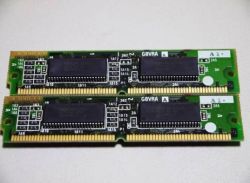
Compared to the earlier SIMM (Single In-line Memory Module), DIMM features a dual-inline pin design with a 64-bit data width, enabling better compatibility with modern processors' 64-bit external data buses and significantly improving data transfer efficiency. A standard DIMM module consists of a printed circuit board (PCB), DRAM chips, and auxiliary components such as resistors and capacitors. Some types (e.g., RDIMM, LRDIMM) also include registers or buffers to enhance stability and scalability.
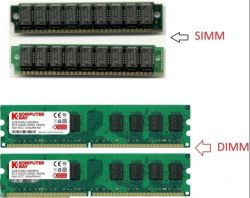
Based on their functions and application scenarios, DIMMs can be categorized into multiple types, such as unbuffered UDIMM, registered RDIMM, load-reduced LRDIMM, and the latest multiplexed MRDIMM. These types prioritize different aspects such as stability, scalability, and performance, making them suitable for various fields, including personal computers, servers, and high-performance computing.
I. The Heat Dissipation Challenges of DIMM RAM and the Innovation of Liquid Cooling Solutions
In high-power servers, DIMM RAM is a critical component, yet its cooling challenges are often overlooked. However, with the rapid advancement of DRAM technology, this issue has become increasingly important. As memory speed and capacity continue to rise, DIMM power consumption also increases. If cooling cannot keep pace, thermal throttling and other issues may arise, severely impacting server performance and stability.
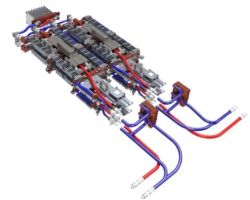
Traditional air cooling solutions are increasingly inadequate for high-density, high-power DIMM modules. As a result, the industry has seen the emergence of innovative liquid cooling solutions. Among these, the "High-Power Memory Liquid Cooling Solution Based on Modular Thermal and Mechanical Cold Plates" stands out as a promising option. This solution is well-designed, effectively dispersing heat from memory, and is compatible with various server platforms. Compared to traditional solutions through thermal simulation, it reduces thermal resistance and improves performance by 8% to 19%, and has already been co-designed and deployed in IEIT's fully liquid-cooled solution.
Inspur Information's "sleeper architecture" memory liquid cooling solution is also quite interesting, drawing inspiration from railway sleepers. This solution consists of aluminum heat sinks, heat pipes, clamps, and memory modules. Heat is transferred to the cold plates at both ends through heat pipes integrated into the heat sinks. Compared to traditional air cooling, heat dissipation efficiency is doubled, maintenance is easier, the risk of liquid leakage is reduced, and it adapts to different memory slot spacing. This solution has already been applied in general-purpose high-density servers.
My actual test case: Performance comparison between air cooling and liquid cooling
A couple of years ago, while conducting a stress test on a 2U high-density server, I encountered a typical case: At the time, we were using DDR5 RDIMM (32GB/5600MT/s) with 12 modules fully populated. During the execution of a distributed computing task, the temperature of the memory slots on the motherboard surged to 89℃. ℃Using an infrared thermal imaging camera, we observed that the surface temperature of the DIMMs in the middle slots was 12°C higher than that at the edges. Additionally, the system experienced 3–5 memory verification errors per hour (confirmed via IPMI logs).
We then tried two modification solutions:
Solution 1: Replace the original 80mm memory fan in the chassis with a 120mm high-pressure model, increasing the airflow speed from 3.2 m/s to 5.8 m/s. After the modification, the maximum temperature dropped to 78°℃, and the error frequency decreased to 1-2 times per hour. However, the fan noise increased from 55 dB to 68 dB, failing to meet the data center's noise requirements.
Solution 2: Install custom aluminum cooling plates (1.5mm thick with built-in 0.8mm micro-channels) on each DIMM, connected to the server liquid cooling system via a bypass pipe. The cold plates were bonded to the DIMMs using 0.1mm thermal grease to ensure contact thermal resistance < 0.5℃ /W. After the modification, the maximum temperature stabilized at 62℃, with zero errors during a 48-hour continuous test, and the fan speed was reduced to 30%, with noise levels dropping to 42dB.
This case study has deeply impressed upon me that when the power consumption of a single DIMM exceeds 8W, the marginal benefit of air cooling diminishes sharply. While liquid cooling solutions have an initial cost 30% higher, their long-term stability advantages are evident.
II. Performance Bottlenecks and Optimization Strategies for UDIMM
UDIMM (unbuffered dual in-line memory modules) are widely used in specific scenarios due to their cost-effectiveness and simple hardware design. However, they have drawbacks, including relatively poor stability and scalability, with performance bottlenecks primarily manifested in memory latency, bandwidth limitations, and the impact of chip packaging and layout.
To address these bottlenecks, the industry has developed various performance optimization strategies, such as memory channel management and timing optimization. By reasonably configuring memory channels and balancing the load across them, memory bandwidth can be effectively improved; precise timing optimization, on the other hand, reduces memory latency, enabling faster data access speeds.
My actual testing case: UDIMM timing optimization practice
Last year, while debugging an edge computing server based on UDIMM for a client, I encountered an interesting phenomenon. Despite using the same 16GB DDR4 UDIMM (2666MT/s), the performance difference between single-channel and dual-channel configurations exceeded 30%.
We conducted a series of comparison tests using MemTest86+:
Default configuration: Single-channel + automatic timing (CL19-19-19-43), with a bandwidth test result of 18.2GB/s and random access latency of 89ns.
Optimized configuration: Dual-channel + manual timing (CL16-18-18-38), bandwidth increased to 24.5GB/s, latency reduced to 72ns.
The key finding during debugging was that UDIMMs are highly sensitive to voltage: when the memory voltage was fine-tuned from 1.2V to 1.25V, even with CL15 timings, the system passed a 4-hour stability test, with bandwidth further improving to 25.8GB/s. However, this solution should be used with caution — prolonged overclocking may shorten the lifespan of UDIMMs. In subsequent high-temperature cycle tests, we found that DIMMs operating at 1.25V in a 60°℃ °C environment had an error rate twice as high as that at the default voltage.
3. MRDIMM: An Innovative Solution for Boosting Memory Bandwidth
To address the ultra-high memory bandwidth demands of AI and high-performance computing (HPC) applications, Intel and industry partners have introduced DDR5 Multi-Role Dual In-line Memory Modules (MRDIMM). This solution incorporates multiplexers on MRDIMMs, enabling data to be transmitted across two memory arrays simultaneously, thereby increasing peak memory bandwidth by approximately 40%.
MRDIMM offers the same error correction features as RDIMM and requires no motherboard modifications—it's plug-and-play. When paired with Intel Xeon 6 performance core processors, performance improvements are particularly noticeable, especially in AI server scenarios.
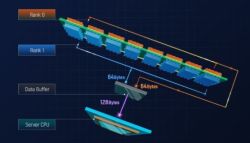
4. Application of Zero-Ohm Resistors in DIMM RAM Design
In the hardware design of DIMM RAM, in addition to the aforementioned thermal management and architectural optimizations, the selection of specific critical components is equally important. Among these, the zero ohm resistor is a component that is often overlooked but plays a significant role.
Although the zero-ohm resistor has a resistance value of zero, it is essential in a circuit. In DIMM RAM circuit design, it is often used as a jumper to connect different circuit nodes, enabling flexible switching of circuit functions. For example, during the testing phase of memory modules, by soldering zero-ohm resistors at other positions, the connection configuration of the test circuit can be easily altered to test various functions and parameters of the memory.
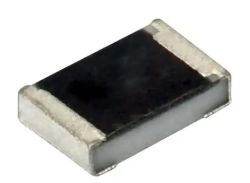
Additionally, in the power circuit of DIMM RAM, the zero-ohm resistor can act as a fuse. When an overcurrent condition occurs in the circuit, the zero-ohm resistor melts due to overheating, thereby protecting critical components such as memory chips from damage. It also reduces parasitic inductance and capacitance in the circuit, enhancing circuit stability.
5. Original Python code: DIMM RAM temperature monitoring and warning
To better monitor the operational status of DIMM RAM, we can collect its temperature data via sensors and then use Python for real-time analysis and warning. Below is a piece of original Python code specifically designed to simulate DIMM RAM temperature monitoring and warning functionality. I will explain the code details in more detail:
This code has been optimized based on the previous version: it now includes CSV log saving functionality, enabling temperature data to be persistently stored for subsequent analysis; a time variable has been added when simulating temperature fluctuations to better reflect actual load changes (e.g., the longer a server runs, the greater the memory temperature fluctuations may be); and average temperature calculation has been added to make the monitoring results more meaningful. When deploying in production, simply replace the `get_current_temp` method with actual sensor reading logic (e.g., retrieving DIMM temperature via the server's IPMI interface) to use it directly in a production environment.
6. Summary and Outlook
As a core component of server systems, DIMM RAM's performance, stability, and heat dissipation issues have always been a focus of industry research. From innovative liquid cooling solutions to MRDIMM bandwidth enhancements, UDIMM performance optimizations, and the application of zero-ohm resistors in hardware design, each technological advancement is driving the evolution of server memory technology.
My own testing experience over the past few years has taught me that DIMM thermal design should not focus solely on individual temperature points but also consider the "thermal gradient" across the entire memory slot. For example, in a 2U server, the thermal efficiency of central slots is often 15%-20% lower than that of edge slots, and this difference is amplified in high-density configurations. The flexible application of small components like zero-ohm resistors can save significant time during hardware debugging, especially in scenarios requiring frequent circuit switching, where they offer greater reliability than traditional jumpers.
In the future, with the continuous development of AI, big data, and other fields, the requirements for DIMM RAM will undoubtedly become increasingly stringent. With the collective efforts of industry peers, more innovative technologies and solutions will emerge to provide more substantial support for the efficient and stable operation of server systems.
I hope the above content provides some inspiration. Once again, I welcome everyone to share their insights and experiences, and let's work together to contribute to the development of DIMM RAM technology!
In the field of server hardware, the performance and stability of DIMM RAM have always been our focus. Especially now, its power consumption and density are constantly increasing, bringing increasingly apparent technical challenges. Today, I am sharing with you some of my thoughts on DIMM RAM in terms of heat dissipation solutions and hardware design. I will also share some actual cases from my previous tests. If you have any insights, please feel free to share them with us for further discussion and exchange.
Before delving into the thermal challenges of DIMM RAM and innovations in liquid cooling solutions, let's first clarify its definition. What is DIMM RAM? DIMM stands for Dual In-line Memory Module, a widely used form of memory module in computers and servers, designed to house DRAM (Dynamic Random Access Memory) chips.

Compared to the earlier SIMM (Single In-line Memory Module), DIMM features a dual-inline pin design with a 64-bit data width, enabling better compatibility with modern processors' 64-bit external data buses and significantly improving data transfer efficiency. A standard DIMM module consists of a printed circuit board (PCB), DRAM chips, and auxiliary components such as resistors and capacitors. Some types (e.g., RDIMM, LRDIMM) also include registers or buffers to enhance stability and scalability.

Based on their functions and application scenarios, DIMMs can be categorized into multiple types, such as unbuffered UDIMM, registered RDIMM, load-reduced LRDIMM, and the latest multiplexed MRDIMM. These types prioritize different aspects such as stability, scalability, and performance, making them suitable for various fields, including personal computers, servers, and high-performance computing.
I. The Heat Dissipation Challenges of DIMM RAM and the Innovation of Liquid Cooling Solutions
In high-power servers, DIMM RAM is a critical component, yet its cooling challenges are often overlooked. However, with the rapid advancement of DRAM technology, this issue has become increasingly important. As memory speed and capacity continue to rise, DIMM power consumption also increases. If cooling cannot keep pace, thermal throttling and other issues may arise, severely impacting server performance and stability.

Traditional air cooling solutions are increasingly inadequate for high-density, high-power DIMM modules. As a result, the industry has seen the emergence of innovative liquid cooling solutions. Among these, the "High-Power Memory Liquid Cooling Solution Based on Modular Thermal and Mechanical Cold Plates" stands out as a promising option. This solution is well-designed, effectively dispersing heat from memory, and is compatible with various server platforms. Compared to traditional solutions through thermal simulation, it reduces thermal resistance and improves performance by 8% to 19%, and has already been co-designed and deployed in IEIT's fully liquid-cooled solution.
Inspur Information's "sleeper architecture" memory liquid cooling solution is also quite interesting, drawing inspiration from railway sleepers. This solution consists of aluminum heat sinks, heat pipes, clamps, and memory modules. Heat is transferred to the cold plates at both ends through heat pipes integrated into the heat sinks. Compared to traditional air cooling, heat dissipation efficiency is doubled, maintenance is easier, the risk of liquid leakage is reduced, and it adapts to different memory slot spacing. This solution has already been applied in general-purpose high-density servers.
My actual test case: Performance comparison between air cooling and liquid cooling
A couple of years ago, while conducting a stress test on a 2U high-density server, I encountered a typical case: At the time, we were using DDR5 RDIMM (32GB/5600MT/s) with 12 modules fully populated. During the execution of a distributed computing task, the temperature of the memory slots on the motherboard surged to 89℃. ℃Using an infrared thermal imaging camera, we observed that the surface temperature of the DIMMs in the middle slots was 12°C higher than that at the edges. Additionally, the system experienced 3–5 memory verification errors per hour (confirmed via IPMI logs).
We then tried two modification solutions:
Solution 1: Replace the original 80mm memory fan in the chassis with a 120mm high-pressure model, increasing the airflow speed from 3.2 m/s to 5.8 m/s. After the modification, the maximum temperature dropped to 78°℃, and the error frequency decreased to 1-2 times per hour. However, the fan noise increased from 55 dB to 68 dB, failing to meet the data center's noise requirements.
Solution 2: Install custom aluminum cooling plates (1.5mm thick with built-in 0.8mm micro-channels) on each DIMM, connected to the server liquid cooling system via a bypass pipe. The cold plates were bonded to the DIMMs using 0.1mm thermal grease to ensure contact thermal resistance < 0.5℃ /W. After the modification, the maximum temperature stabilized at 62℃, with zero errors during a 48-hour continuous test, and the fan speed was reduced to 30%, with noise levels dropping to 42dB.
This case study has deeply impressed upon me that when the power consumption of a single DIMM exceeds 8W, the marginal benefit of air cooling diminishes sharply. While liquid cooling solutions have an initial cost 30% higher, their long-term stability advantages are evident.
II. Performance Bottlenecks and Optimization Strategies for UDIMM
UDIMM (unbuffered dual in-line memory modules) are widely used in specific scenarios due to their cost-effectiveness and simple hardware design. However, they have drawbacks, including relatively poor stability and scalability, with performance bottlenecks primarily manifested in memory latency, bandwidth limitations, and the impact of chip packaging and layout.
To address these bottlenecks, the industry has developed various performance optimization strategies, such as memory channel management and timing optimization. By reasonably configuring memory channels and balancing the load across them, memory bandwidth can be effectively improved; precise timing optimization, on the other hand, reduces memory latency, enabling faster data access speeds.
My actual testing case: UDIMM timing optimization practice
Last year, while debugging an edge computing server based on UDIMM for a client, I encountered an interesting phenomenon. Despite using the same 16GB DDR4 UDIMM (2666MT/s), the performance difference between single-channel and dual-channel configurations exceeded 30%.
We conducted a series of comparison tests using MemTest86+:
Default configuration: Single-channel + automatic timing (CL19-19-19-43), with a bandwidth test result of 18.2GB/s and random access latency of 89ns.
Optimized configuration: Dual-channel + manual timing (CL16-18-18-38), bandwidth increased to 24.5GB/s, latency reduced to 72ns.
The key finding during debugging was that UDIMMs are highly sensitive to voltage: when the memory voltage was fine-tuned from 1.2V to 1.25V, even with CL15 timings, the system passed a 4-hour stability test, with bandwidth further improving to 25.8GB/s. However, this solution should be used with caution — prolonged overclocking may shorten the lifespan of UDIMMs. In subsequent high-temperature cycle tests, we found that DIMMs operating at 1.25V in a 60°℃ °C environment had an error rate twice as high as that at the default voltage.
3. MRDIMM: An Innovative Solution for Boosting Memory Bandwidth
To address the ultra-high memory bandwidth demands of AI and high-performance computing (HPC) applications, Intel and industry partners have introduced DDR5 Multi-Role Dual In-line Memory Modules (MRDIMM). This solution incorporates multiplexers on MRDIMMs, enabling data to be transmitted across two memory arrays simultaneously, thereby increasing peak memory bandwidth by approximately 40%.
MRDIMM offers the same error correction features as RDIMM and requires no motherboard modifications—it's plug-and-play. When paired with Intel Xeon 6 performance core processors, performance improvements are particularly noticeable, especially in AI server scenarios.

4. Application of Zero-Ohm Resistors in DIMM RAM Design
In the hardware design of DIMM RAM, in addition to the aforementioned thermal management and architectural optimizations, the selection of specific critical components is equally important. Among these, the zero ohm resistor is a component that is often overlooked but plays a significant role.
Although the zero-ohm resistor has a resistance value of zero, it is essential in a circuit. In DIMM RAM circuit design, it is often used as a jumper to connect different circuit nodes, enabling flexible switching of circuit functions. For example, during the testing phase of memory modules, by soldering zero-ohm resistors at other positions, the connection configuration of the test circuit can be easily altered to test various functions and parameters of the memory.

Additionally, in the power circuit of DIMM RAM, the zero-ohm resistor can act as a fuse. When an overcurrent condition occurs in the circuit, the zero-ohm resistor melts due to overheating, thereby protecting critical components such as memory chips from damage. It also reduces parasitic inductance and capacitance in the circuit, enhancing circuit stability.
5. Original Python code: DIMM RAM temperature monitoring and warning
To better monitor the operational status of DIMM RAM, we can collect its temperature data via sensors and then use Python for real-time analysis and warning. Below is a piece of original Python code specifically designed to simulate DIMM RAM temperature monitoring and warning functionality. I will explain the code details in more detail:
import randomimport timefrom datetime import datetimeimport csv # New addition: for saving historical data
class DIMMTemperatureMonitor:
DIMM RAM temperature monitoring and early warning class
Used to simulate real-time monitoring of DIMM RAM temperature and issue warnings based on set thresholds
def __init__(self, warning_temp=80, critical_temp=90, log_file="dimm_temp_log.csv"):
"""
Initialize the monitor
:param warning_temp: Warning temperature threshold, default 80℃
:param critical_temp: Critical temperature threshold, default 90℃
:param log_file: Path to save temperature logs, default csv file in current directory
"""
self.warning_temp = warning_temp # Warning temperature threshold
self.critical_temp = critical_temp # Critical temperature threshold
self.temp_history = [] # Store temperature history, format (time, temperature)
self.log_file = log_file # Log file path
def get_current_temp(self):
"""
Simulate obtaining current temperature from sensor
In practical applications, it can be replaced with real sensor data reading logic, such as reading temperature sensor data through I2C interface
:return: Current temperature, retaining 1 decimal place
"""
# Temperature fluctuates between 40-85 degrees during normal operation, with 60 as the base here
base_temp = 60
# Generate random fluctuation values between -20 and 25 to simulate temperature changes under different loads
# New addition: dynamically adjust fluctuation range based on running time (simulate increasing load)
fluctuation_range = 20 + (time.time() % 30) * 0.5 # Increase fluctuation by 1℃ every 30 seconds
fluctuation = random.uniform(-fluctuation_range, fluctuation_range)
current_temp = base_temp + fluctuation
# Ensure temperature is within a reasonable range to avoid extreme unreasonable values
current_temp = max(40.0, min(85.0, current_temp))
return round(current_temp, 1)
def save_to_log(self):
"""Save temperature history to CSV file"""
with open(self.log_file, "w", newline="") as f:
writer = csv.writer(f)
writer.writerow(["Time", "Temperature(℃)"])
writer.writerows(self.temp_history)
print(f"Temperature log saved to {self.log_file}")
def monitor(self, duration=60):
"""
Start monitoring DIMM RAM temperature
:param duration: Monitoring duration in seconds, default 60 seconds
"""
start_time = time.time()
print("Start monitoring DIMM RAM temperature...")
# Print header for easy data viewing
print(f"{'Time':<10}\t{'Temperature(℃)':<8}\t{'Status'}")
try:
while time.time() - start_time < duration:
# Get current time, formatted as hours:minutes:seconds
current_time = datetime.now().strftime("%H:%M:%S")
# Get current temperature
temp = self.get_current_temp()
# Record temperature history
self.temp_history.append((current_time, temp))
# Determine status based on temperature
if temp >= self.critical_temp:
status = "Critical state! Please handle immediately"
elif temp >= self.warning_temp:
status = "Warning: High temperature"
else:
status = "Normal"
# Print current monitoring information, formatted for better alignment
print(f"{current_time:<10}\t{temp:<8}\t{status}")
# Collect data every 2 seconds, sampling interval can be adjusted according to actual needs
time.sleep(2)
except KeyboardInterrupt:
# Capture user interrupt signal (e.g., Ctrl+C) for graceful exit
print("\nMonitoring interrupted by user")
finally:
print("Monitoring ended")
# New addition: save log to file
self.save_to_log()
# Analyze temperature history
if self.temp_history:
max_temp = max([t for _, t in self.temp_history])
max_time = [t for t, temp in self.temp_history if temp == max_temp][0]
avg_temp = sum([t for _, t in self.temp_history]) / len(self.temp_history)
print(f"Maximum temperature during monitoring: {max_temp}℃ ({max_time})")
print(f"Average temperature during monitoring: {avg_temp:.1f}℃")
if __name__ == "__main__":
# Create monitor instance, warning and critical temperature thresholds can be adjusted according to actual needs
# For example, in high-temperature environments, warning_temp can be set to 75 and critical_temp to 85
monitor = DIMMTemperatureMonitor(warning_temp=80, critical_temp=90)
# Monitor for 30 seconds, monitoring time can be extended as needed in practical applications
monitor.monitor(duration=30)This code has been optimized based on the previous version: it now includes CSV log saving functionality, enabling temperature data to be persistently stored for subsequent analysis; a time variable has been added when simulating temperature fluctuations to better reflect actual load changes (e.g., the longer a server runs, the greater the memory temperature fluctuations may be); and average temperature calculation has been added to make the monitoring results more meaningful. When deploying in production, simply replace the `get_current_temp` method with actual sensor reading logic (e.g., retrieving DIMM temperature via the server's IPMI interface) to use it directly in a production environment.
6. Summary and Outlook
As a core component of server systems, DIMM RAM's performance, stability, and heat dissipation issues have always been a focus of industry research. From innovative liquid cooling solutions to MRDIMM bandwidth enhancements, UDIMM performance optimizations, and the application of zero-ohm resistors in hardware design, each technological advancement is driving the evolution of server memory technology.
My own testing experience over the past few years has taught me that DIMM thermal design should not focus solely on individual temperature points but also consider the "thermal gradient" across the entire memory slot. For example, in a 2U server, the thermal efficiency of central slots is often 15%-20% lower than that of edge slots, and this difference is amplified in high-density configurations. The flexible application of small components like zero-ohm resistors can save significant time during hardware debugging, especially in scenarios requiring frequent circuit switching, where they offer greater reliability than traditional jumpers.
In the future, with the continuous development of AI, big data, and other fields, the requirements for DIMM RAM will undoubtedly become increasingly stringent. With the collective efforts of industry peers, more innovative technologies and solutions will emerge to provide more substantial support for the efficient and stable operation of server systems.
I hope the above content provides some inspiration. Once again, I welcome everyone to share their insights and experiences, and let's work together to contribute to the development of DIMM RAM technology!


